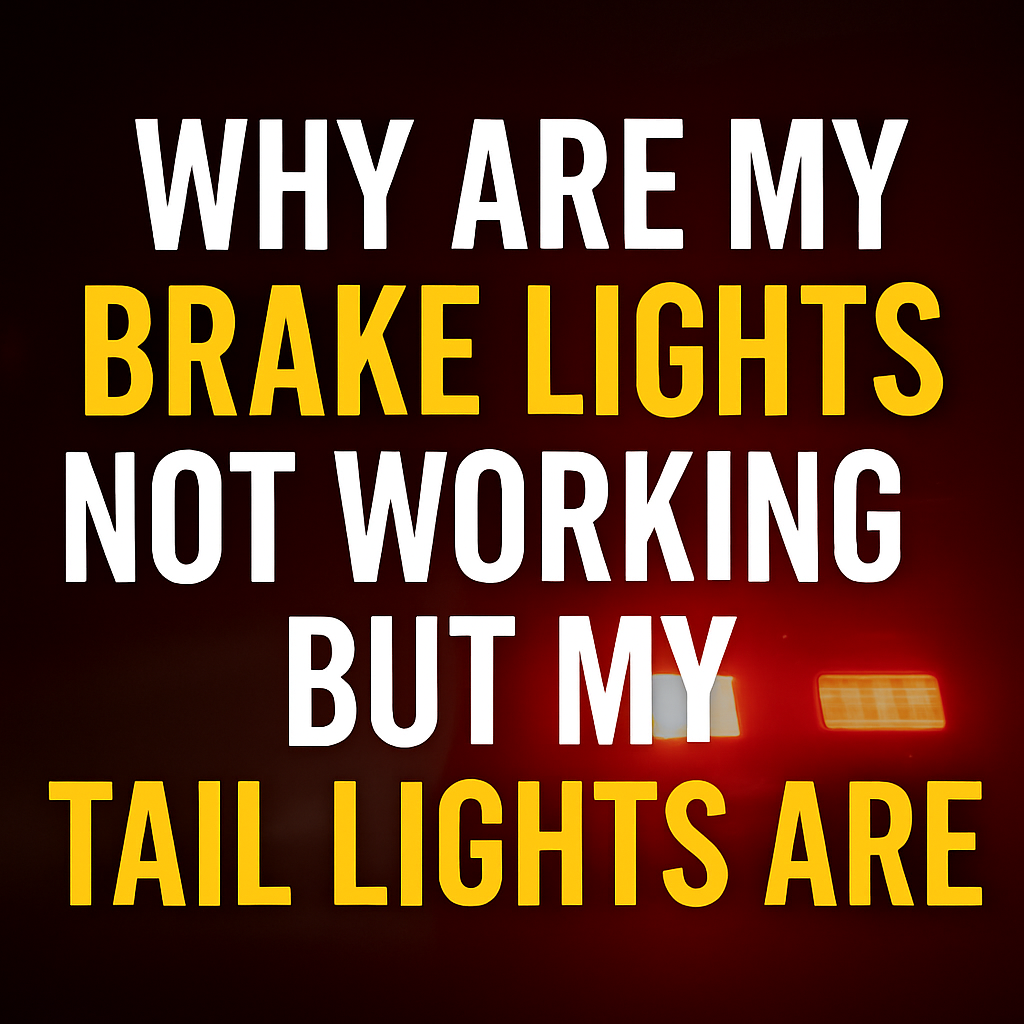When your brake lights aren't working but your tail lights are, it can be a serious safety concern since other drivers won't know when you're slowing down or stopping. Why are my brake lights not working but my tail lights are?
The most common reason brake lights work while tail lights don't is a blown brake light bulb or a faulty brake light switch, since these components operate on separate circuits despite being in the same housing.
While this explains the most likely cause, there are actually several other potential issues that could be causing your brake lights to malfunction - and some of these problems could indicate more serious electrical issues that need immediate attention to ensure your safety on the road.
Common Causes Of Brake Light Failure
One of the first places to check is the brake light bulbs themselves. Unlike tail light bulbs, brake light bulbs can burn out independently due to their higher intensity and more frequent use. You can usually spot a blown bulb by looking for dark or discolored spots on the bulb.
The brake light switch, located near your brake pedal, is another common culprit. This switch activates your brake lights when you press the pedal. Over time, it can become misaligned, stuck, or simply fail due to regular wear and tear. A faulty switch won't send the electrical signal needed to illuminate your brake lights.
Wiring problems can also cause brake lights to fail while tail lights continue working. The brake light circuit is separate from the tail light circuit, so corroded wires, loose connections, or damaged fusing specific to the brake light system won't affect your tail lights.
How To Test If Your Brake Light Switch Is Bad
Testing your brake light switch is relatively simple. First, locate the switch near your brake pedal - it's usually a small plastic piece that the pedal pushes against when released. Have someone watch your brake lights while you press and release the brake pedal several times.
If you hear a clicking sound when pressing the pedal but the lights don't illuminate, the switch is likely working but there's a problem elsewhere in the system. If there's no click, the switch may be faulty or misaligned.
You can also test the switch with a multimeter to check for continuity when the pedal is pressed. This will definitively tell you if the switch is functioning properly.
Should You Drive With Non-Working Brake Lights?
Driving with non-working brake lights is both dangerous and illegal in most jurisdictions. Without functioning brake lights, drivers behind you won't know when you're slowing down or stopping, significantly increasing the risk of rear-end collisions.
Most areas require all brake lights to be operational, and you can be ticketed for faulty brake lights during routine traffic stops or vehicle inspections. The fines can be substantial, and in some cases, you might even be prevented from continuing to drive your vehicle.
If you must drive, use hand signals to indicate stopping or slowing down, but this should only be a very temporary solution while you get to a repair shop or auto parts store.
What Tools Do I Need To Fix My Brake Lights?
For basic brake light repairs, you'll need a few common tools: a socket set or screwdriver to access the bulb housing, replacement bulbs (make sure to check your vehicle's manual for the correct type), and potentially a multimeter for testing electrical connections.
For brake light switch repairs, you might also need pliers and wire strippers. If you're dealing with wiring issues, electrical tape and wire connectors could be necessary. It's also helpful to have a work light or flashlight handy since you'll likely be working in dim conditions.
Remember to disconnect your car battery before starting any electrical work to avoid short circuits or electrical shocks. Having a helper to press the brake pedal while you test the lights can also make the job much easier.
How Much Does It Cost To Fix Brake Lights?
The cost of fixing brake lights varies significantly depending on the underlying issue. Replacing a brake light bulb is the least expensive fix, typically costing between $10-30 for the bulbs if you do it yourself. Professional installation might add $20-50 in labor costs.
A faulty brake light switch replacement usually costs between $100-200 when done professionally, with the switch itself costing $30-75 and labor making up the difference. If the problem lies in the wiring, costs can escalate to $200-600 or more, depending on the complexity of the repair and the extent of the damage.
For electrical issues affecting the entire brake light system, such as problems with the body control module or major wiring harness issues, repairs could exceed $1,000. These more complex repairs are best left to professional mechanics who have the necessary diagnostic equipment and expertise.
Taking Action On Your Brake Light Issues
Before attempting any repairs yourself, start by having someone watch your brake lights while you press the pedal, which will help you determine if the issue is intermittent or constant. This simple diagnostic step will help you decide whether you can handle the repair yourself with basic tools or if you need to seek professional help, potentially saving you time and money in the long run.
Looking for high-quality emergency vehicle lighting? Contact Ultra Bright Lightz for your vehicle lighting needs.


